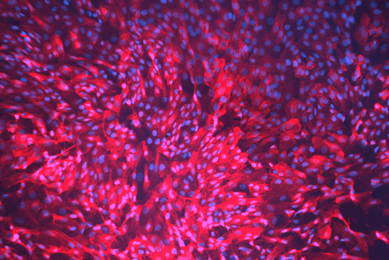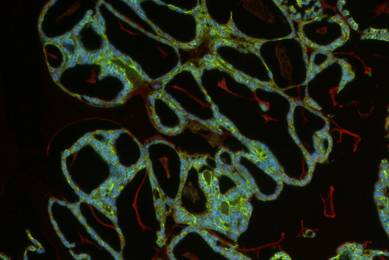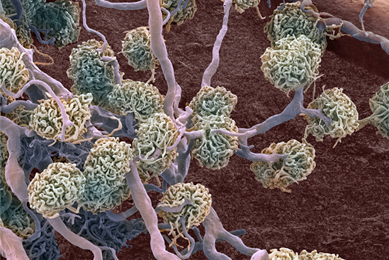Why it’s important
SLC transporters comprise a super family of more than 400 proteins that regulate the import and export of a wide range of substrates across biological membranes.1 It is the largest family of transporters encoded by the human genome.2 These transporters are widely expressed in the epithelia of major organs throughout the body, and they are involved in various biological processes such as nutrient uptake, drug absorption, and clearance. SLC transporters also play an important role in human health. Genetic defects in SLC transporters are often associated with human diseases such as amyotrophic lateral sclerosis (ALS), autism, Alzheimer's disease, schizophrenia, diabetes, metabolic and cardiovascular diseases, and several types of cancer.3 More than 100 Mendelian diseases are caused by a defect in a single SLC transporter.4
Although a good number of SLC transporters have been identified as promising drug targets, the vast majority of SLC transporters have not been exploited therapeutically. For many SLC transporters, there is little knowledge around their biological substrates and biofunctions. Further, unleashing the full potential of SLC transporters for drug discovery is often hindered by a lack of appropriate research tools and in vitro models.
What’s the solution
Broadening and deepening our knowledge on dysfunctional SLC transporters and their impact on imbalances in the uptake, disposal, or absorption of metabolites and ions across different tissues will lead to a better understanding of human diseases. Due to the uniqueness of the SLC family, large-scale projects are needed to systematically investigate how differences in genetic makeup affect individual cellular function and substrate molecular transportation. Development of a library comprising in vitro models with individual SLC transporters overexpressed or knocked out could facilitate de-orphanization of the SLC superfamily. In addition, cell models that have human origin, functioning transporters, clinical predictability, and consistent data output for both functional and drug interaction studies could be essential for researchers in the field.
How we can help
In collaboration with the RESOLUTE project, ATCC has accessioned a large collection of cell lines that possess genetically deleted (knockout, KO) SLC transporters. These cell lines were derived from the commonly used colorectal cancer cell line HCT116, and they can be used to identify new biological roles for these understudied proteins. The first available group of 30 cell lines possess knockouts in SLC transporters such as SLC15, SLC25, MITCH1, and SLC35. ATCC will continue to provide additional cell models based on researchers’ requests.
Did you know?
ATCC's portfolio of SLC cell models includes hTERT-immortalized kidney transporter cells that stably overexpress either the OAT1, OCT2, or OAT3 gene for drug toxicity screening and more.
Meet the author
Fang Tian, PhD
Director, Biological Content, ATCC
Dr. Fang Tian, Director of Biological Content for ATCC, has extensive experience in cell biology and molecular biology. She oversees human, animal cell lines and hybridomas, and product development in the Cell Biology General Collection at ATCC. Dr. Tian was a research fellow in Massachusetts General Hospital, Harvard Medical School. She conducted postdoctoral research at the Hillman Cancer Institute of UPMC.
Check out our featured resources

Solute Transporter Carrier Cells
ATCC has been able to create kidney transporter cells that stably overexpress either the OAT1, OCT2, or OAT3 gene. We also provide cell lines that express knockouts of other SLC genes.
More
Toxicology and Safety Testing
Streamline your research with advanced cell models that support every stage of your toxicological screening.
More Application note
Application note
Genetically Modified Renal Proximal Tubule Epithelial Cells
We created three different hTERT-immortalized human primary renal proximal tubule epithelial cells (RPTEC) that stably express the OAT1, OCT2, and OAT3 proteins. We then tested the ability of these cells to intracellularly convey known SLC protein substrates.
MoreReferences
- Schumann T, et al. Solute Carrier Transporters as Potential Targets for the Treatment of Metabolic Disease. Pharmacological Reviews 72(1): 343-379, 2020.
- Rebsamen M, et al. Gain-of-function genetic screens in human cells identify SLC transporters overcoming environmental nutrient restrictions. Life Sci Alliance 5(11): e202201404, 2022. PubMed: 36114003
- Zhang Y, et al. The SLC transporter in nutrient and metabolic sensing, regulation, and drug development. J Mol Cell Biol 11(1): 1-13, 2019. PubMed: 30239845
- Lin L, et al. SLC Transporters as Therapeutic Targets: Emerging Opportunities. Nat Rev Drug Discov 14(8): 543-560, 2015. PubMed: 26111766